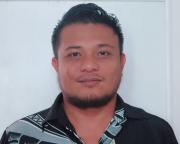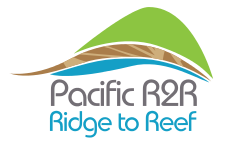Project Overview
Kiribati is home to some of the world’s most significant coastal and marine biodiversity. The country has more than 1500 documented species and 22 Key Biodiversity Areas (KBAs). Though Kiribati’s terrestrial biodiversity is limited and the country has very limited land and agriculture resources with soils shallow, alkaline and very low in organic matter, many of indigenous crop species form the basis of sustenance on the islands. These include coconuts (‘Te nii’ – Cocos nucifera); pandanus, (‘Te kaina’ – Pandanus tectorius); breadfruit (‘Te mai’ – Artocarpus altilis); and giant swamp taro (‘Te bwabwai’- Cyrtosperma chamissonis). Kiribati’s near shore fisheries in the country’s lagoons and coastal areas provide food, livelihood, nutrition, income and employment benefits. Fisheries play a critical role in local food security in Kiribati where the per capita consumption seafood is one of the highest in the world.
Within the above context, taking in to consideration the fact that Kiribati is a low-income food-deficit country (LIFDC) with a significant trade deficit amid limited export options and rising import costs, major environmental and developmental problems faced by Kiribati are i) continuing degradation of the island ecosystems and ii) the impacts of the climate change. There have been several initiatives/programmes implemented in the country to mitigate above mentioned challenges. In spite of these efforts, key barriers remain that prevent addressing environmental degradation issues effectively. These barriers are; i) inadequate institutional framework and governance weaknesses, ii) limited technical capacities and skills at all levels and iii) limited alternative livelihoods and economic opportunities.
This project will address these barriers through implementation of project the components noted below, with the objective to improve biodiversity conservation and landscape level management to enhance socio-ecological resilience to climate variability and change:
- Enabling environment for R2R conservation and sustainable use
- Implementation of R2R conservation and sustainable use strategies
- Lessons learning and sharing
Expected project outcomes include the following:
- Enabling environment improved for ecosystem-based sustainable use and conservation of island resources (LD3 (tracking tool) Framework strengthening INRM score moved from 2 to 3; LD3 (tracking tool) Capacity strengthening to enhance cross-sector enabling environment score moved from 2 to 3).
- National management system for ecosystem-based sustainable use and conservation of island resources established to deliver SFM, LD, and BD benefits (23496 hectares covered by integrated natural resource management-land and marine- practices in wider landscape.
The project will be implemented in Butaritari, North Tarawa and Tabituea. About 10,090 community members are expected to benefit from the project.

David Piritasi Yeeting Jr.
R2R Star National Project Coordinator
Email: [email protected]
Implementing Agency: Food and Agriculture Organization of the United Nations (FAO)
Ms. Taare Aukitino
Secretary
Ministry of Environment, Lands and Agricultural Development (MELAD)
GEF Political Focal Point
Email: [email protected]
Ms. Nenenteiti Teariki Ruatu
Director
Environment and Conservation Division, MELAD
GEF National Operational Focal Point
Email: [email protected]










